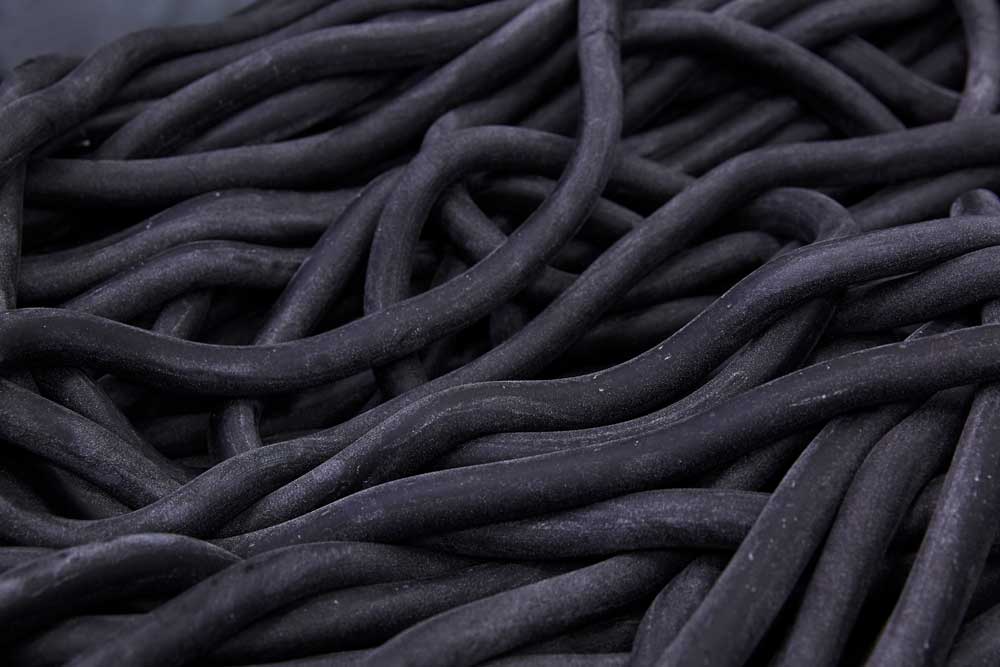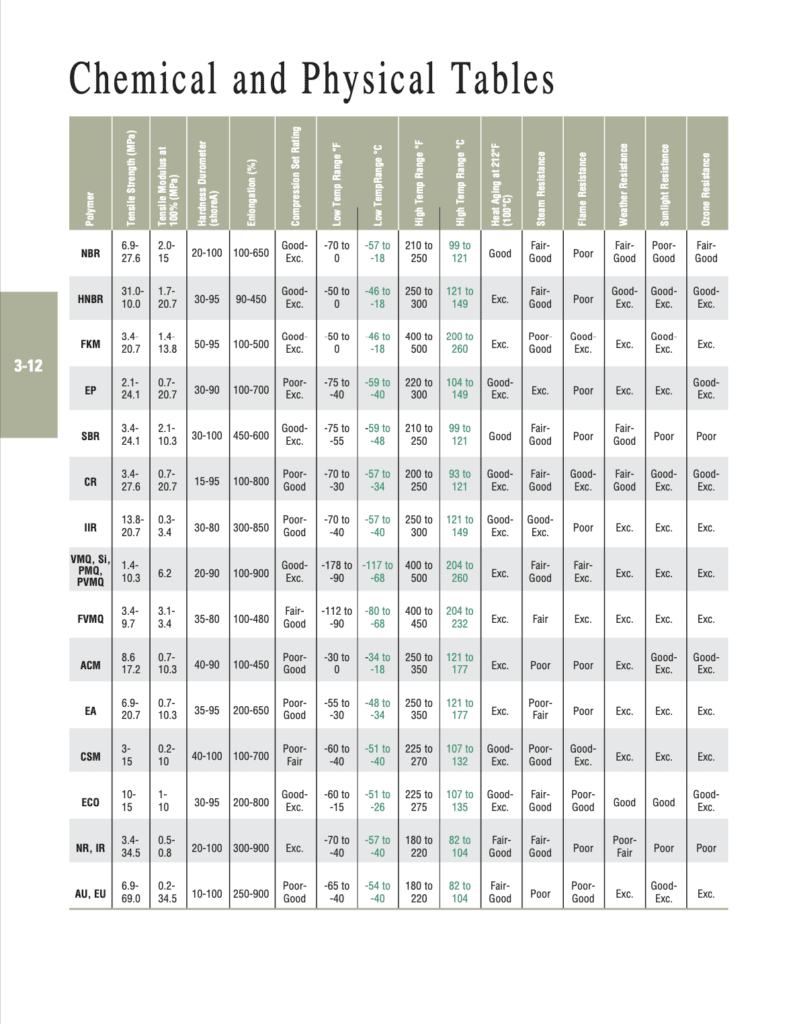
Acrylonitrile / Butadiene
Acrylonitrile / Butadiene (NBR)
NBR, Buna-N, and nitrile all represent the same elastomer based on a butadiene and acrylonitrile copolymer. Nitrile is inherently resistant to hydraulic fluids, lubricating oils, transmission fluids and other non-polar petroleum based products due to the polar structure of this elastomer. Nitriles are also resistant to air and water environments.
Utilizing the variety of nitrile polymers and compounding ingredients, Minnesota Rubber & Plastics has derived nitrile compounds to withstand environments that require low compression set, abrasion resistance, low-temperature flex, gas permeation resistance, ozone resistance and/or stress-stain properties.
By hydrogenation, carboxylic acid addition, or PVC blending, the nitrile polymer can meet a broader range of physical or chemical requirements.
Compound 366Y
- Excellent petroleum fluid and water resistance
- Outstanding oil resistance to aniline point oils of 130° F to 255° F (55° C to 124° C)
- Good compression set resistance
Compound 372FX
- Good oil and water resistance
- Good compression set resistance
- Low durometer and modulus
- Low temperature resistance
Compound 431 T
- Low swell to petroleum oils and fuels
- Outstanding oil resistance – aniline point oils below 130°F (55°C)
- Low temperature properties to -30°F (-34°C)
- High tensile strength and good abrasion resistance
- Good heat aging
Compound 523HW
- Excellent low temperature performance at -70°F (-57°C)
Compound 525K
- Excellent abrasion and wear resistance
- Good heat resistance and compression set resistance
- Frequently used for ground ball applications
- Excellent contact compatibility properties with plastics
| Compound | Hardness Shore A | Tensile MPa | Tensile psi | Elongation (%) | Oil Aging Volume Swell (Change %) 70hr at 100°C/212°F ASTM #1 | Oil Aging Volume Swell (Change %) 70hr at 100°C/212°F IRM 903 |
|---|---|---|---|---|---|---|
| 366Y | 70 | 14.1 | 2050 | 320 | -4 | +10 |
| 525K | 70 | 17.2 | 2500 | 330 | -1 | +16 |
| 431T | 70 | 14.6 | 2100 | 340 | -13 | -5 |
| 523HW | 70 | 13.8 | 2000 | 330 | -9 | +19 |
| 372FX | 50 | 10.0 | 1450 | 400 | -10 | +20 |
Chemical and Physical Tables
Click below to view the Elastomers/Materials: Chemical and Physical Tables PDF
